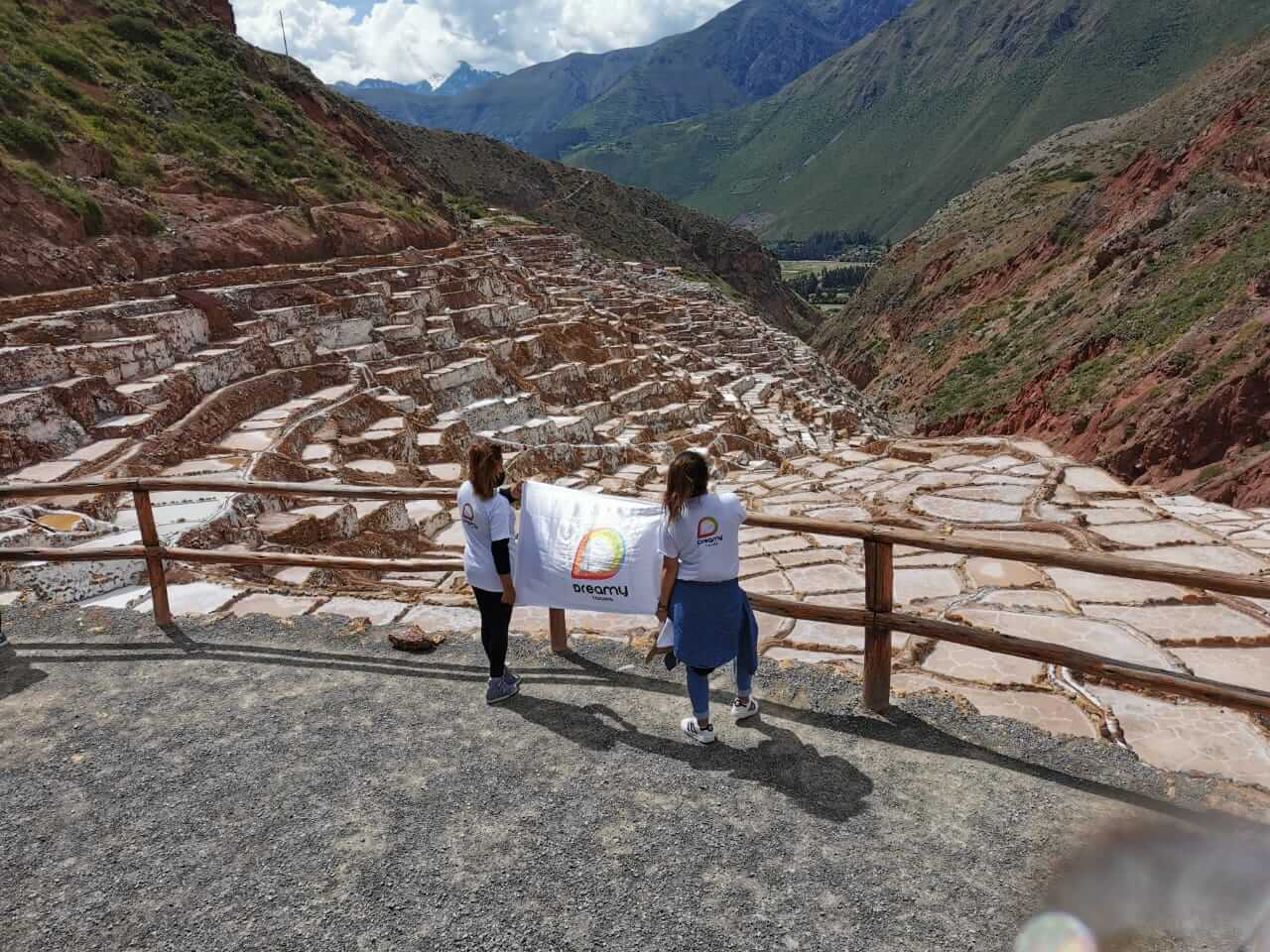Immersed in the breathtaking Andean beauty of the Sacred Valley, the Maras salt mines offer a new look at surprising Inca ingenuity and skill. Find out everything about this beautiful attraction in Maras.
Salt Mines of Maras
The Salt encrusted Ponds at Maras look like a blanket of snow covering the side of the Qoripujio mountain in the distance. It is a spectacular sight. Each of the more than 3,000 pools have various shades of white or brown. Maras salt has been collected since pre-Inca times and travelers are invited to see this centuries-old tradition at work.


Maras in Peru is a town located in the Sacred Valley of the Incas, where an ancient custom is still practiced: the use of pre-Inca salt pools. These incredible constructions continue to provide the city and our country with their pink salt, which has been recommended by experts as a healthy option to flavor foods due to its healing properties.
In addition to their nutritional value, the Maras salt mines are often visited for their spectacular scenery. Here you will find everything you need to know about this historical wonder hidden in the Andes.
Surprising history of Maras in Peru
The first shallow Salt Ponds in Maras were probably built by the Wari civilization between 500 and 1100 AD. C. Most of these pools, built along the steep slope of Qoripujio Mountain, were no more than 15 square feet (5 square meters) and 30 centimeters deep.
During the 12th and mid-14th centuries, the Inca Empire took over the Maras operation. The Incas seasoned and preserved their food with salt. They may also have used the mineral for mummification and other religious ceremonies. Ownership and management of the individual salt mines was given to families living in the nearby community of Maras in Peru. The same salt extraction process used by these families during Inca times has been passed down from generation to generation and is still practiced today.
But where does the salt of Maras come from?
The salt comes from an underground flow of salt water that bubbles up from the source of the Qoripujio Mountain, near an upper section of the valley. Therefore, an intricate network of narrow channels was built to direct the flow of this salty water to each pond. When the water evaporates, the remaining crystallized salt is carefully removed with shovels and wooden rakes.
Health benefits
Many experts recommend Maras Pink Salt for people suffering from hypertension because it has low levels of sodium chloride. Maras salt also contains calcium, iron, zinc and magnesium, making it a perfect medicinal option for skin conditions and to treat swelling.
For these effects to occur, it is important that you season your meals with Maras salt after you have finished cooking. This is because it loses its medicinal properties in temperatures above 40 degrees Celsius.
The collected salt can be bought on the site very inexpensively. Once it is packed and sold in supermarkets, prices tend to triple.
The Maras Salt Ponds are becoming a popular tourist attraction in Cusco for their astonishing scenery and historical value. By visiting Maras, you will also be contributing to the farming community who will gratefully show you the traditions they inherited from their ancestors.
How to get from Cusco to Salt Mines of Maras?
To get from Cusco to Salt Mines of Maras you must travel to Cusco. From Lima to Cusco, the bus tour lasts around 21 hours and tickets.
The town of Maras is located on a high altitude plateau northwest of Cusco, 60 km. To get from Cusco to Salt Mines of Maras, you must take the detour along the two-lane highway that connects Cusco and the town of Urubamba in the Sacred Valley.
On the tour you will glimpse a green landscape of agricultural fields and snowy peaks in the distance. Halfway between the salt mines, in a rural region far from the main road, is the small town of Maras in Cusco.
To visit the Salt Mines of Maras, you must pay a fee of 5 soles to the local community. So you can walk the narrow trails that cross the hillside to get a closer look at this man-made wonder. The best way to fully appreciate this site is by hiring the services of a tour guide who will explain the salt making process and answer your questions.
Also, to access the Salt Mines of Maras, you can take a Sacred Valley full day tour. It often includes a visit to Moray, an amazing Inca agricultural laboratory; Ollantaytambo, the bastion where a bloody battle was fought against the Spanish; and Chinchero, a city of expert weavers.
Other tours to Maras in Cusco:
What is the best time to visit Maras in Cusco?
The region’s high season is during the dry season (April to October), when sunny blue skies are the norm. This is a very pleasant time to go on a bicycle or horseback excursion. The dry season is a good time to visit the pools because the constant sunlight (which evaporates the water and therefore produces more salt) increases the likelihood that the locals tend to their salt flats.
On the other hand, the rainy season (from November to March) is a beautiful time to visit the Sacred Valley. During those dates, the landscape, including the grassy terraces of Moray, presents a bright and colorful shade of green.










